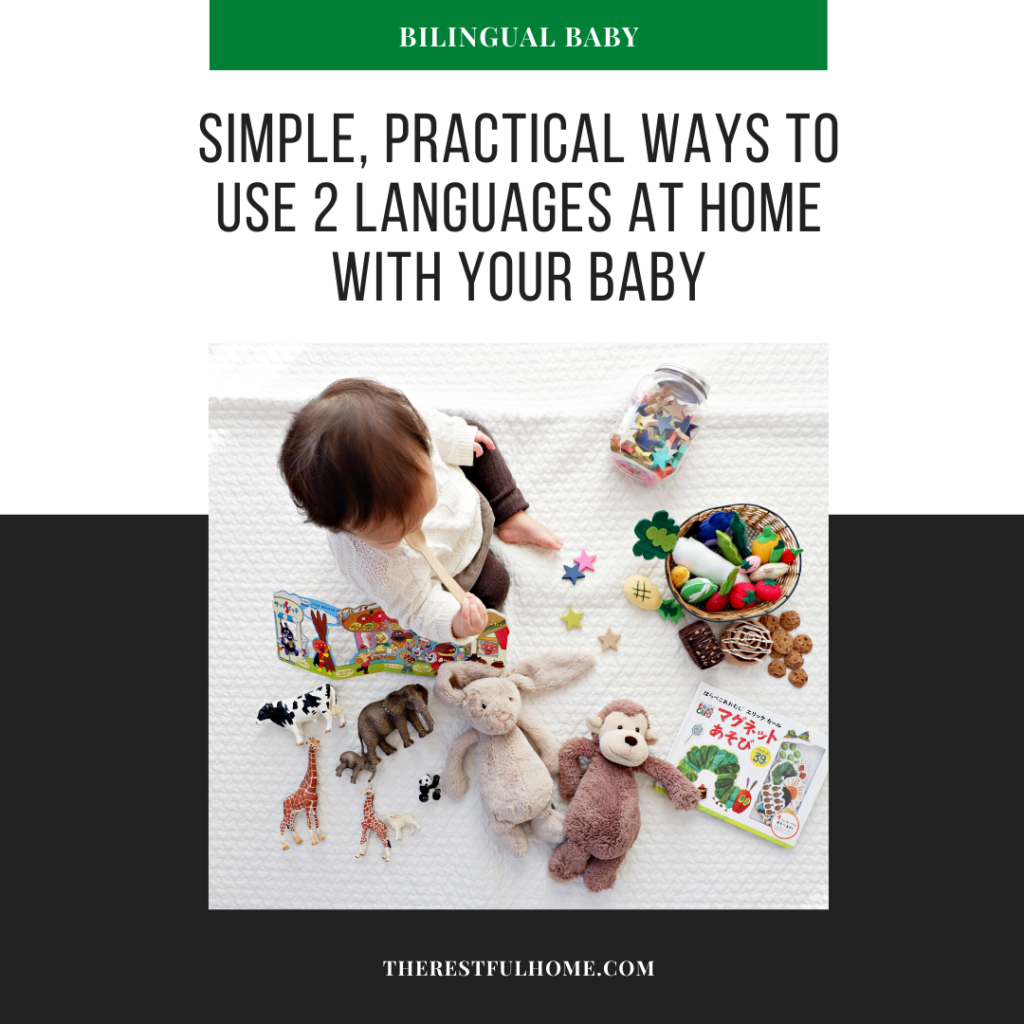
While babies may not be able to speak, they understand far more than we think they do. Researchers from the University of Pennsylvania found in a small study that babies as young as six months old could understand a number of common words in their native language. So, yes, what you are saying to them matters. And as synaptic pruning occurs, babies even lose the ability to hear certain sounds in other languages. Using the languages you want them to be able to speak from the time your babies are very small could be an invaluable boost to their comprehension.
I’ve written about the research surrounding the idea of raising a bilingual baby before now; this post addresses some practical ways you can remind yourself to use two languages with your infant. (This is especially applicable if the target second language is not your mother tongue, as in our case.)
Bilingual Baby: Simple, Practical Ways to Use 2 Languages with Your Baby at Home
-
Chatter in both languages.
If your primary language is English, it can be hard to remember to use the second language when the family is together. Make sure you take some time each day to tell stories or just talk in your second language. My husband doesn’t speak Spanish well, so I tend to “chatter” in Spanish when I take my children on walks outside. (Especially during the current pandemic–COVID-19 currently has us all in the same house most of the time!)
-
Read bilingual books.
My Spanish has definitely suffered during the last few years of living in a city where almost everyone only speaks English. Bilingual books have been priceless for helping me remember words, learn new words, and teach correct Spanish to my toddler and baby. We love our collection of bilingual board books that encourage Spanish and English practice and encourage literacy from the time our children are newborns.
-
Listen to music in both languages.
My baby lights up and starts her version of dancing as soon as any music plays. (For ideas of music you can listen to, check out our resources list that includes Spanish nursery songs.)
-
Name things twice.
If you’re the primary caregiver in your home, the “One Parent One Language” system may not work. One language would be used almost exclusively. In this case, when your baby examines a toy or a leaf or whatever she loves to play with, name the item in both languages. Older babies may imitate the sounds you are making. But don’t worry if they aren’t attempting to speak both languages, even past age one. Listening and comprehending take time and practice.
Note: if you’re trying to speak more Spanish with your baby, but you aren’t sure how to get started because you don’t speak much Spanish, download our list of 100 easy phrases and words to use with your baby!
As your child gets older, you can add even more bilingual elements to his or her environment. But for now, just enjoy playing in two languages with your baby!
